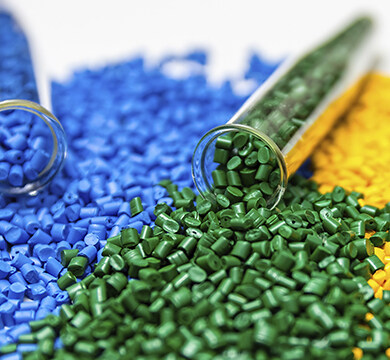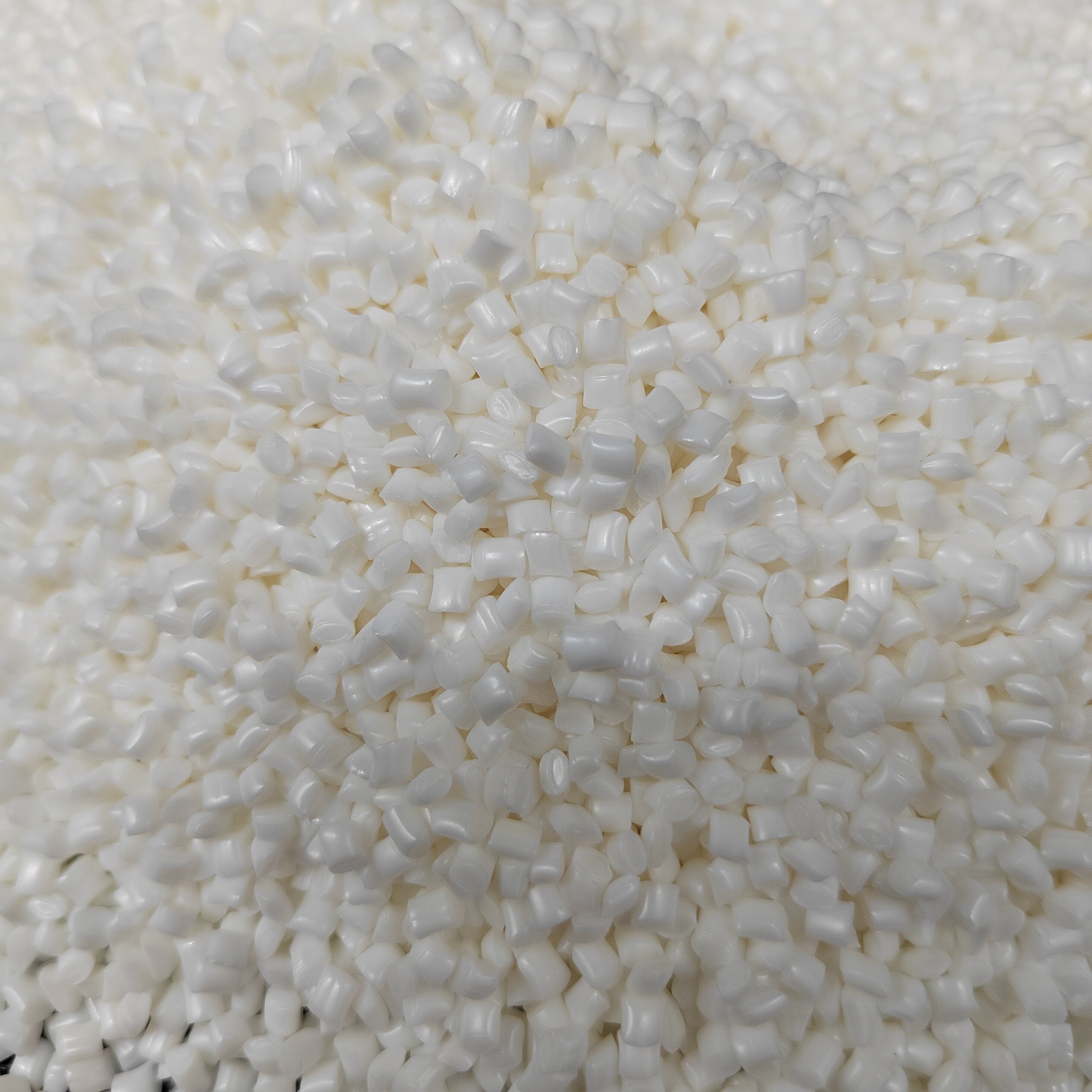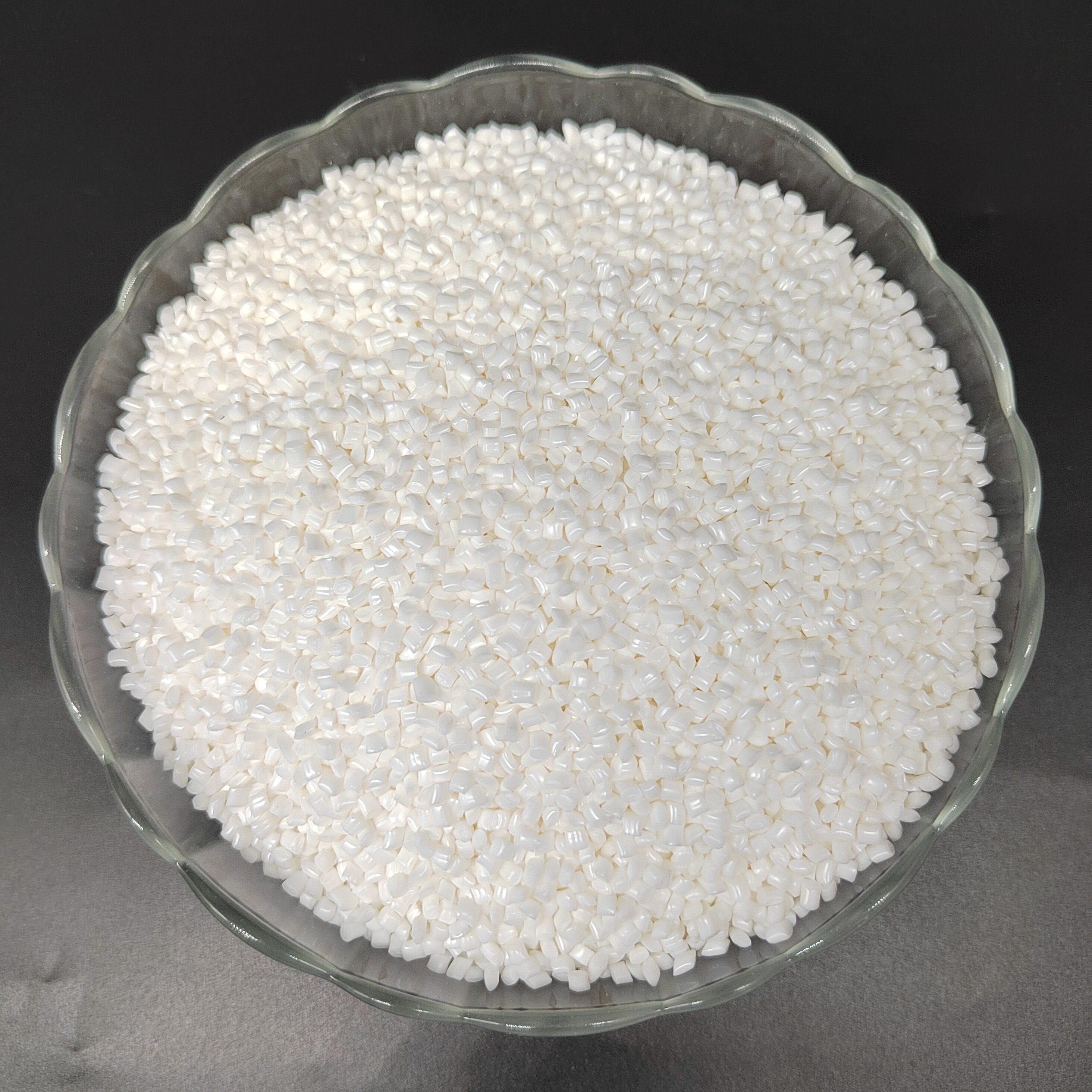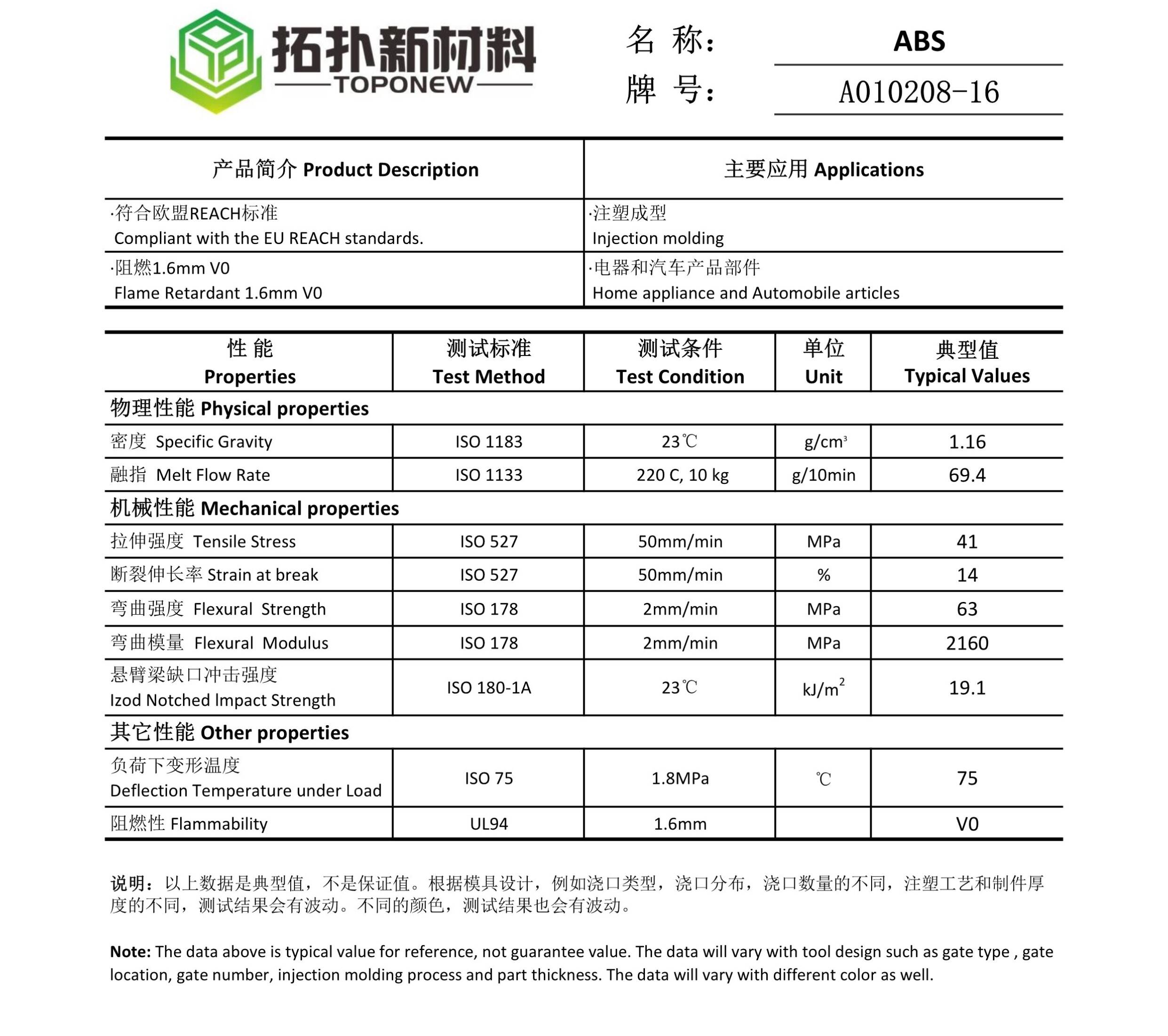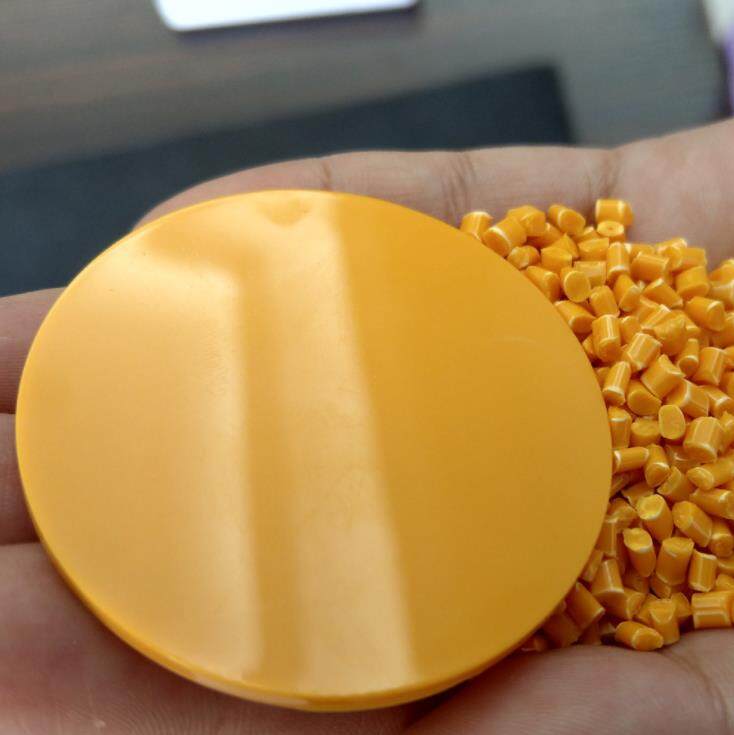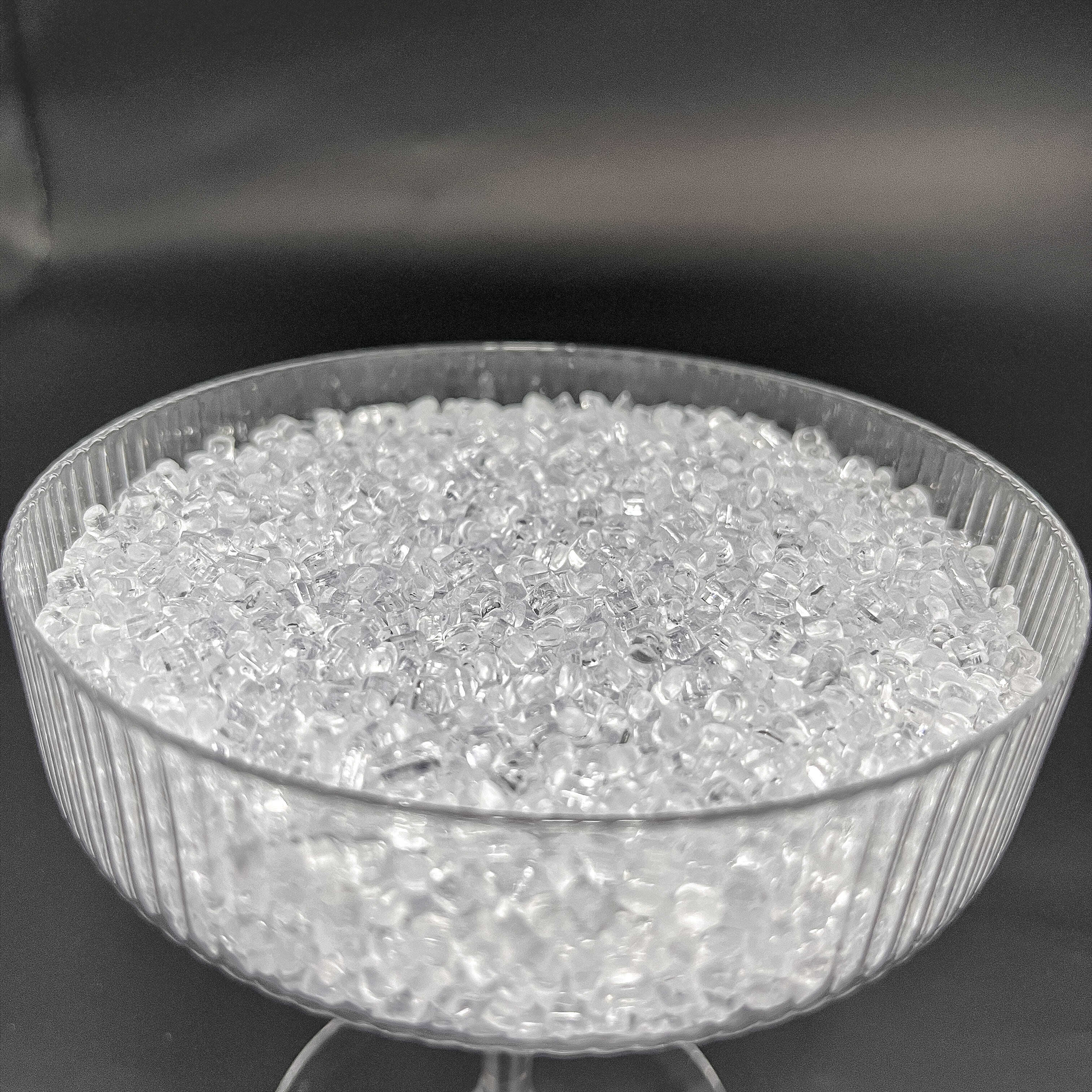Erreur de format d'e-mail
emailCannotEmpty
emailDoesExist
pwdLetterLimtTip
inconsistentPwd
pwdLetterLimtTip
inconsistentPwd

ABS A010208-16
MI: 69.4 g/10min
This 1.6mm V0 flame retardant ABS material does not contain tetrabrominated compounds
Comply with the latest EU REACH standards
(Custom materials available according to your Technical Data Sheet)
- Les détails du produit
-
Download

Customizable Materials Available:
- Color (Customization of plastic pellet color according to your requirements.)
- Flame retardant grade (Let us know which flame retardant level you need: 0.8mm-3.0mm HB, V0, V1, V2, 5VA, 5VB)
- Glass fiber reinforcement material (10%-50% availability)
- Carbon fiber reinforcement material (10%-50% availability)
- UV resistance property (Tell us the application scenarios or UV resistance level of the materials )
- Other materials can also be customized ( Just need to provide your Technical Data Sheet. )
The Technical Data Sheet of A010208-16
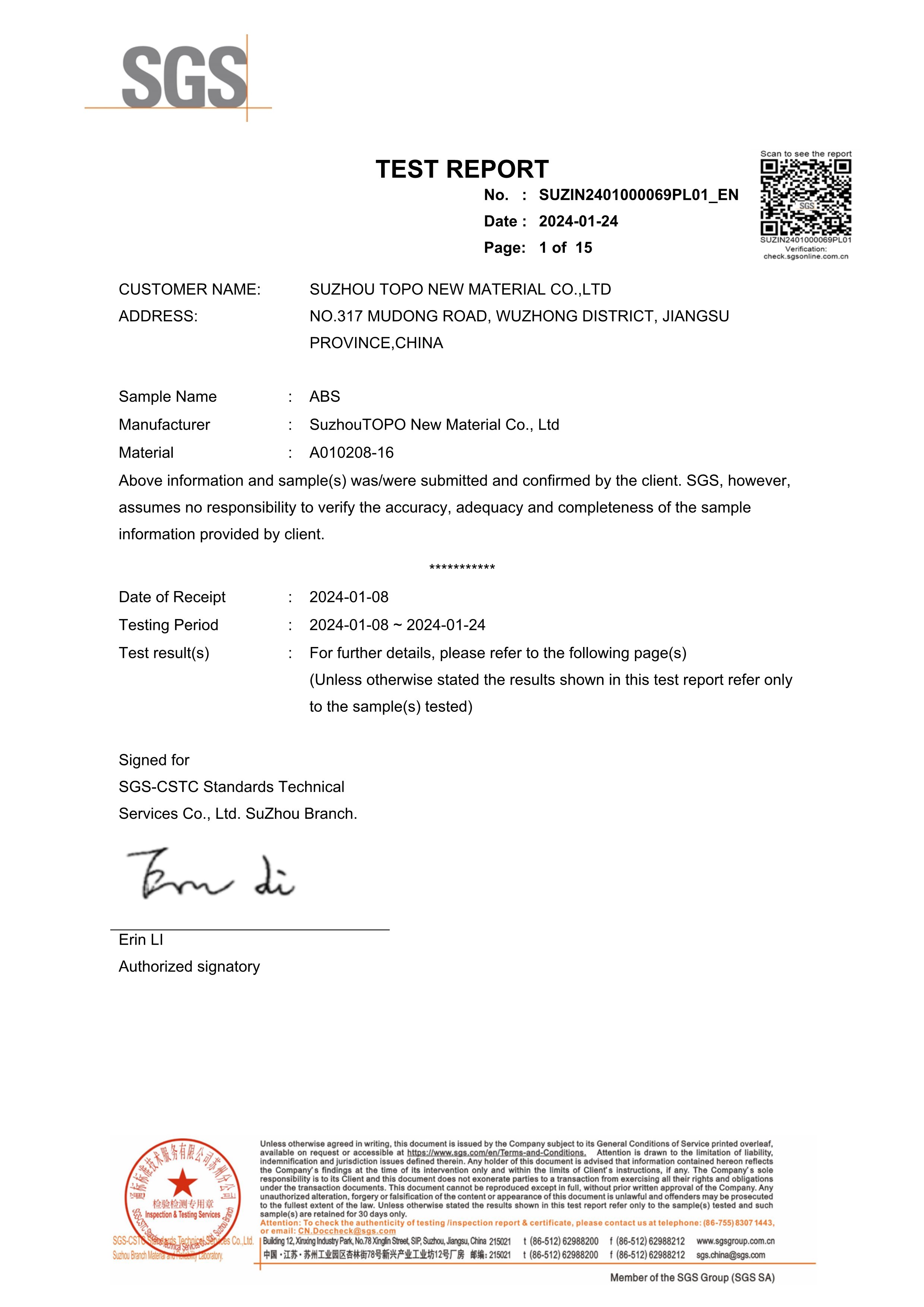
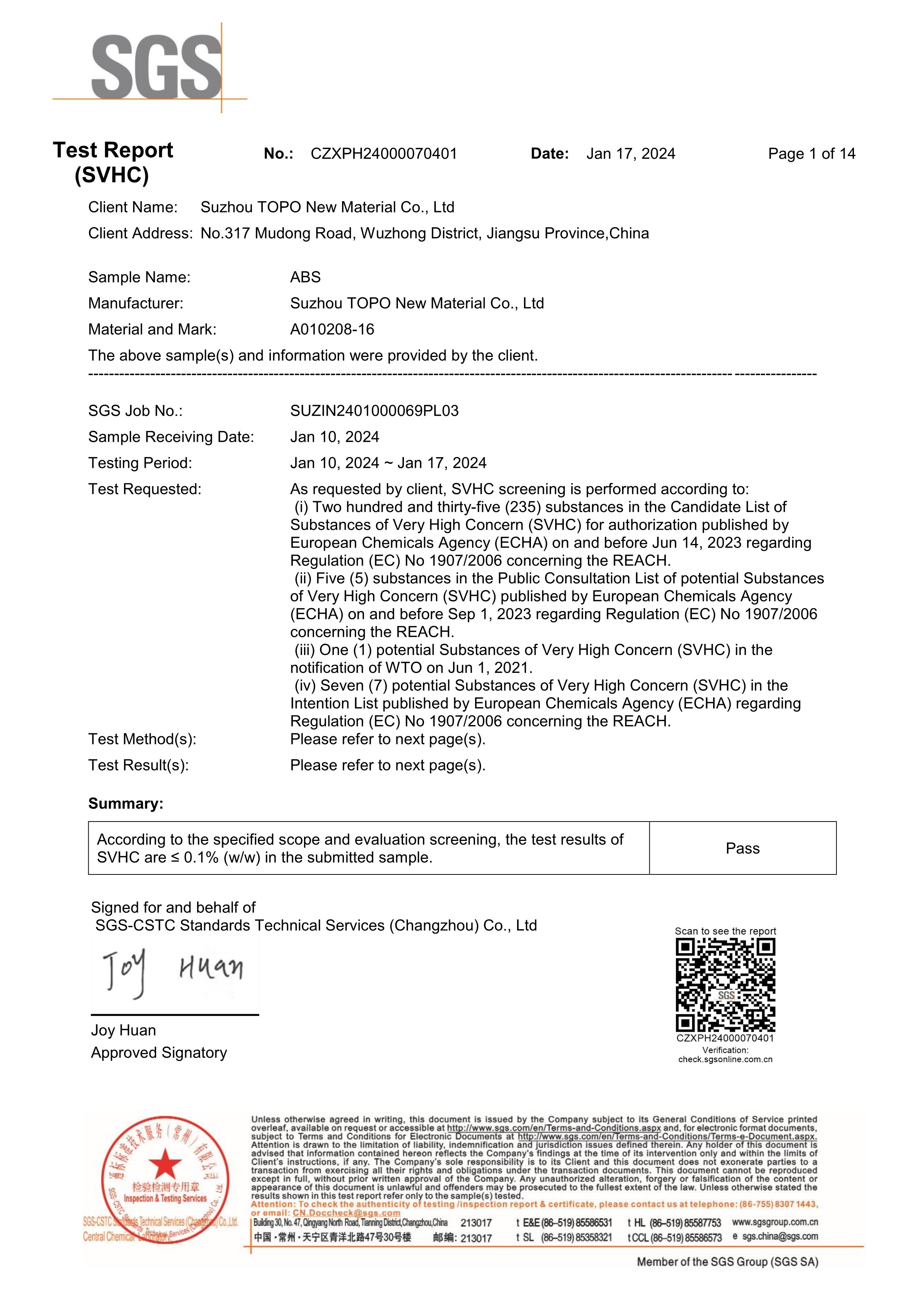
Our high-quality ABS A010208-16 plastic granules that meet the latest REACH standards set by the European Union. This exceptional material is free from any bromine compounds and is fully compliant for export to the EU. It is specifically suitable for applications such as air conditioning units and other household appliance enclosures.
All the technical data mentioned above have been certified by SGS, ensuring the accuracy and reliability of the material's performance.
Key Features of ABS A010208-16
Exceptional Durability: The ABS A010208-16 granules offer outstanding resistance to wear and tear, ensuring prolonged product lifespan.
Excellent Thermal Stability: These granules maintain their integrity under high-temperature conditions, making them suitable for thermoplastic processing methods.
Superior Impact Resistance: The ABS A010208-16 granules exhibit remarkable toughness, withstanding heavy impacts and providing enhanced protection for your products.
Customizable Colors: Choose from a wide range of vibrant colors to meet your specific design requirements.
Welcome to TOPONEW a leading engineering plastics manufacturer and engineering plastics company specialized in ABS resin plastic. Our expertise lies in producing high-quality acrylonitrile butadiene styrene materials that meet industry standards. Join us for innovative solutions and superior ABS plastic products.
A halogen-free flame retardant is a type of flame retardant additive that does not contain halogen elements such as chlorine, bromine, fluorine, or iodine. Traditional flame retardants often contain halogen compounds, but due to environmental and health concerns associated with the release of toxic halogen gases during combustion, there has been a shift towards using halogen-free alternatives.
Halogen-free flame retardants work by interrupting the combustion process and reducing the flammability of materials. They may act through mechanisms such as char formation, gas phase inhibition, or radical quenching to suppress or delay the spread of flames.
Some common types of halogen-free flame retardants include:
-
Phosphorus-based flame retardants: Phosphorus compounds are effective in forming an intumescent char layer when exposed to heat, which insulates the material and prevents further burning.
-
Aluminum hydroxide and magnesium hydroxide: These mineral-based flame retardants release water and inert gases when exposed to heat, diluting flammable gases and cooling the material.
-
Nitrogen-based flame retardants: Compounds containing nitrogen, such as melamine or melamine cyanurate, can release non-combustible gases to dilute flammable gases and inhibit combustion.
Halogen-free flame retardants are becoming more popular in various industries, including electronics, construction, automotive, and textiles, as regulations tighten on the use of halogen-containing flame retardants due to their potential environmental and health risks.
Download
-
ABS A010208-16.pdf
Download ABS A010208-16.pdf -
REACH ABS A010208-16.pdf
Download REACH ABS A010208-16.pdf -
SGS ABS A010208-16.pdf
Download SGS ABS A010208-16.pdf

